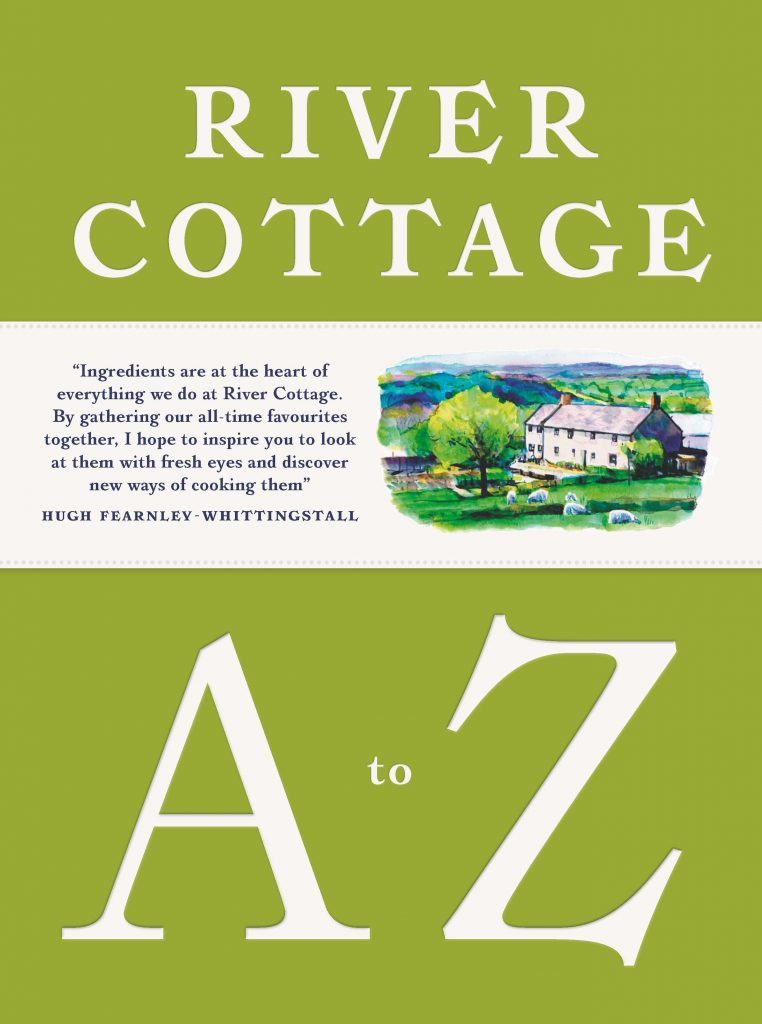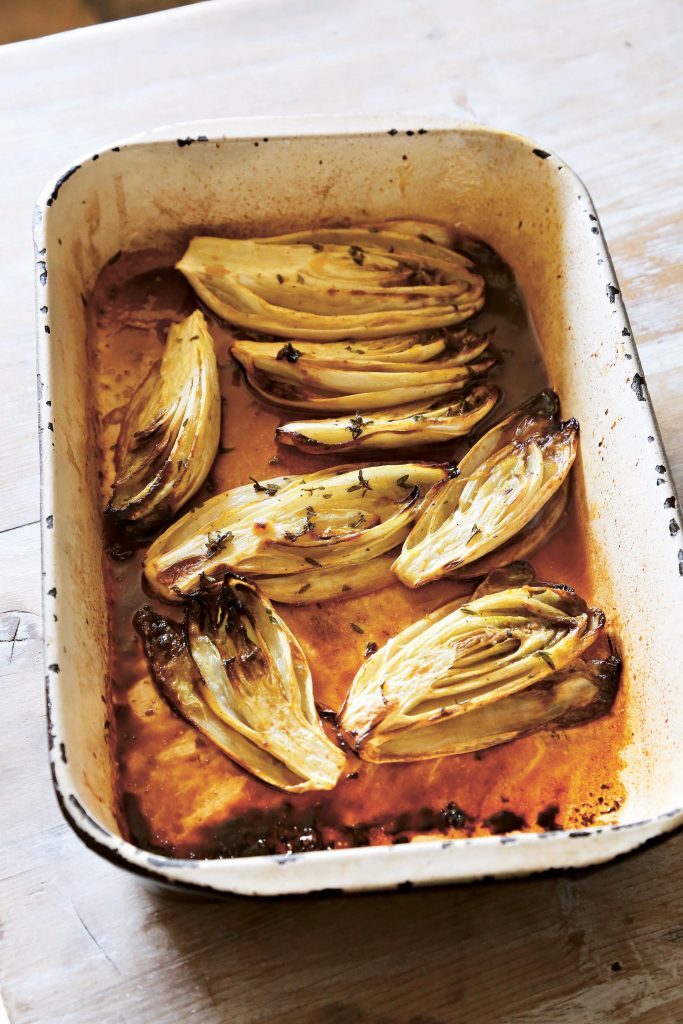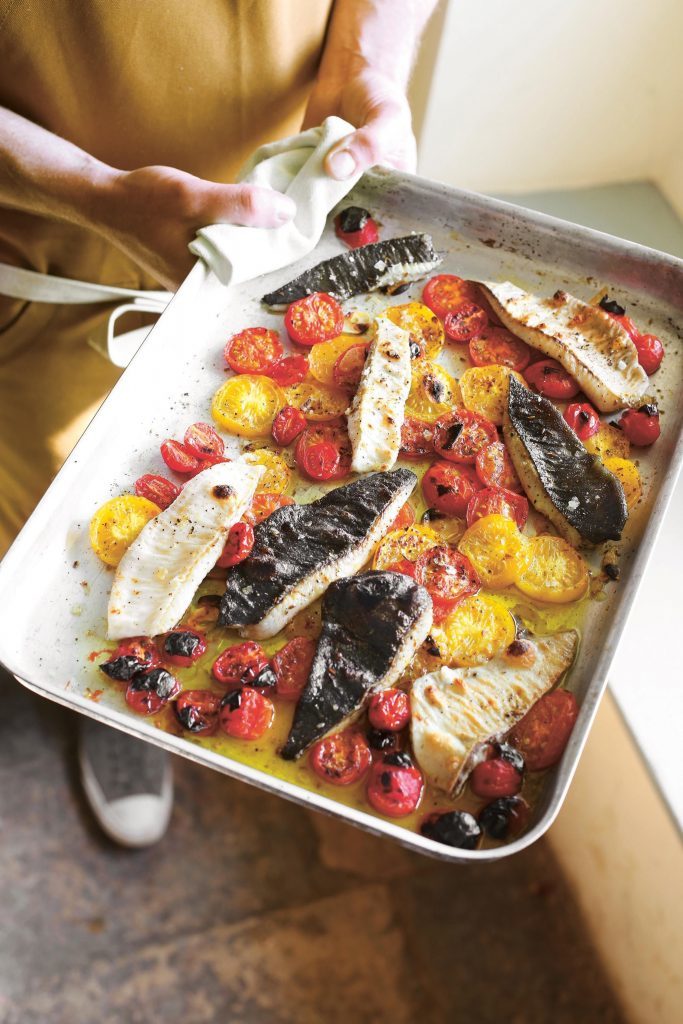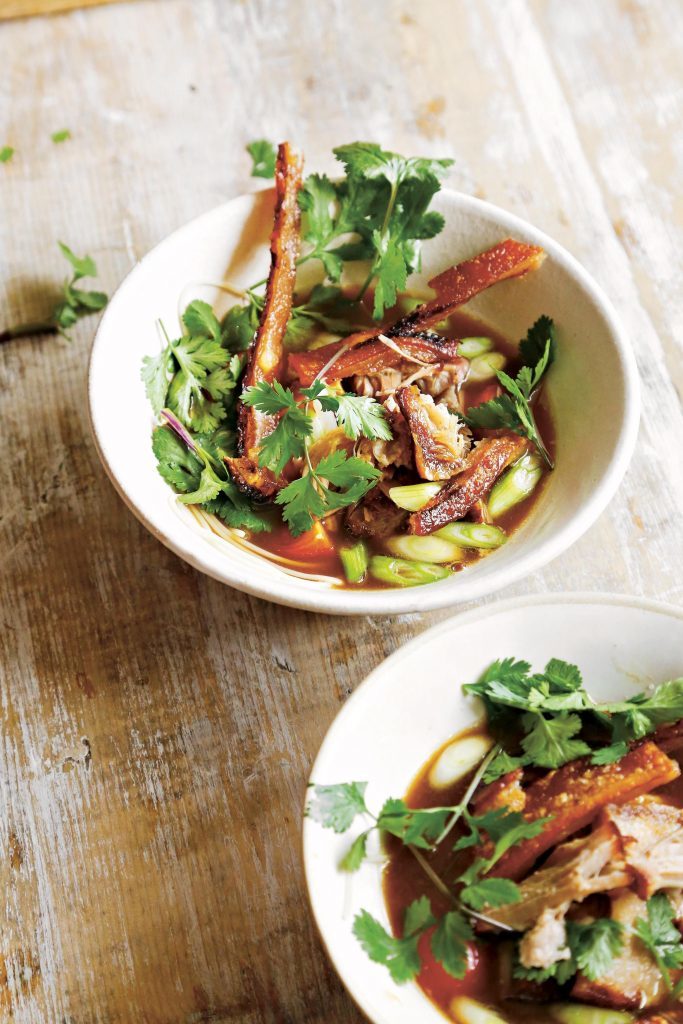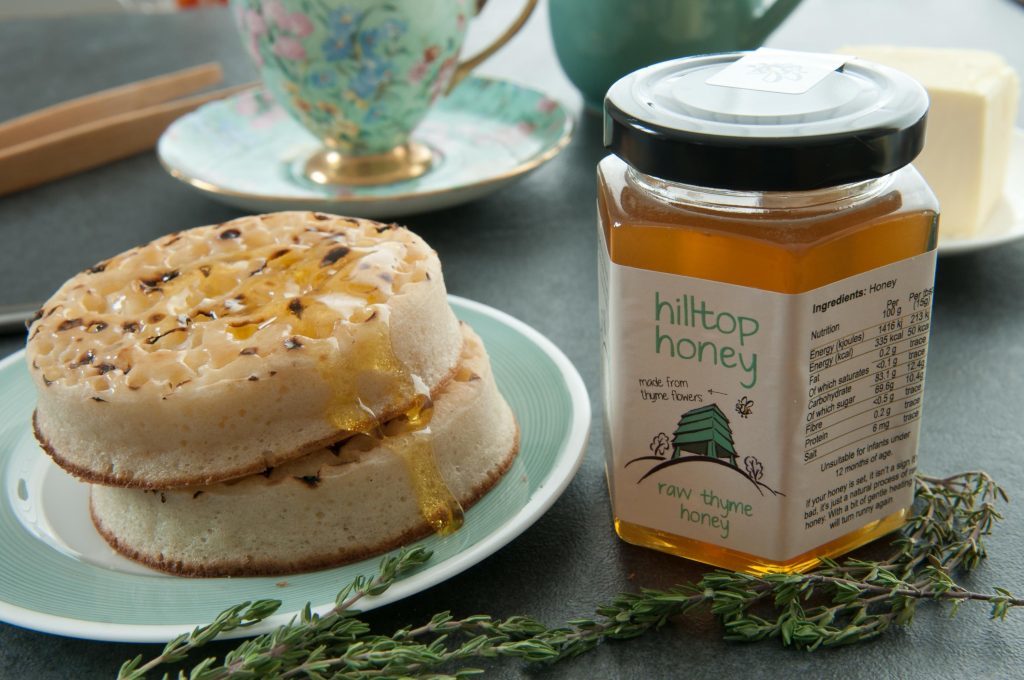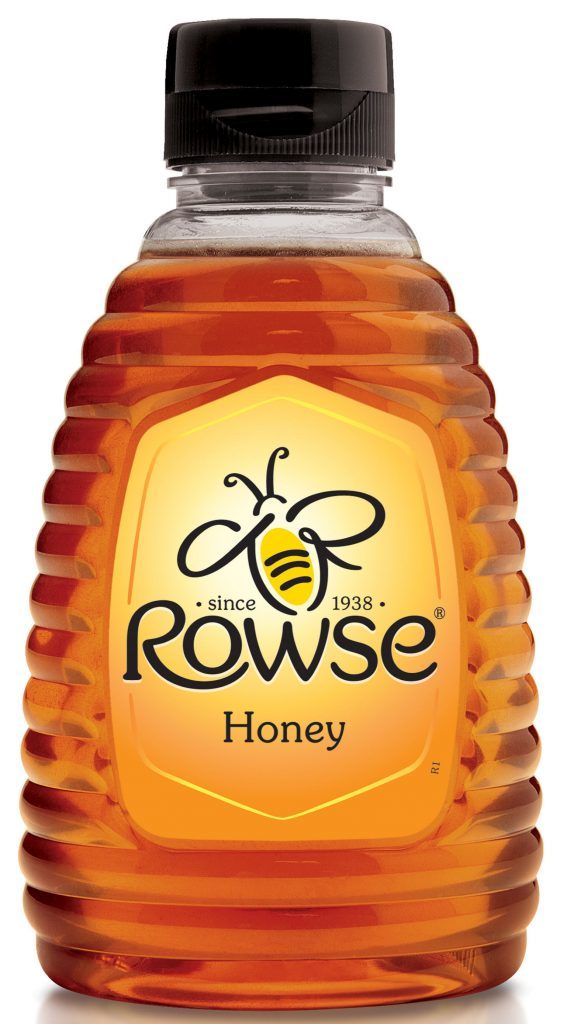As Hugh Fearnley-Whittingstall and his team present a new foodie bible of ingredients, Ella Walker tries her hand at cooking and eating the River Cottage way
I thought they were joking: panna cotta made with seaweed?
Surely River Cottage’s head forager John Wright’s in cahoots with head chef Gill Meller? Setting a room of novices – which includes me – up for a fall come the end of lunch, when we’d all have to dish up a salty sludge of sea green cream to celebrity chef Hugh Fearnley-Whittingstall.
Either that or we’re actually about to make two dishes, and they’d just jumbled up all the ingredients.
But no – it turns out, as I discover by the end of the day, you really can use stewed, smooshed fronds of seaweed, strained through muslin, as a gelatin alternative to set a creamy panna cotta.
It’s one of many interesting facts I glean during a foggy morning spent cooking, foraging and eating at River Cottage HQ, a picturesque farm and cookery school wedged in a valley on the Dorset-Devon border.
A rickety tractor ride takes us down to meet the River Cottage team, a group of food writers, experts and teachers, led by Fearnley-Whittingstall, who have put together a grand new book, River Cottage A To Z, an opus containing more than 350 recipes, dedicated to their favourite ingredients – and it’s huge; the definition of a doorstopper, one that requires not insignificant bicep muscles to heft.
The book is a stunner, but it’s easy to become distracted when you’ve been shepherded into a yurt and are being plied with still warm tahini flatbreads and split pea hummus around a fire.
You certainly don’t go hungry at River Cottage.
Bellies almost full, Wright takes us on a tour of the grounds and kitchen garden, guiding us as we forage for herbs to flavour our desserts, knocking down sprays of musky elderflower with a staff when we can’t reach, telling us to get our noses into plants like lemon verbena and lavender, and to sniff scrunched up currant leaves.
He even wades into a stream to pluck water mint leaves, and provides a running commentary on foraging misconceptions (“Don’t confuse elderflower with fool’s parsley, unless you want cordial tasting of cat wee”), recipe ideas (“Gooseberry fool is always a winner”) and drinking tips – his home-made grass vodka is particularly pungent when sipped at 11am on a Thursday, and smells very much like a horse stable.
Thankfully, the vodka doesn’t knock my cookery skills too much, as lunch – two courses prepared by the River Cottage chefs (little gem and broad bean salad, followed by fragrant pork belly with noodles), and then dessert by me and my fellow novices – is still to go.
This may all sound daunting – and certainly, you are bombarded by incredible amounts of knowledge and skill when encountering River Cottage, whether through its back catalogue of TV shows and books, or its hands-on cookery courses, but somehow it doesn’t overwhelm.
Perhaps it’s the sheer amount of enthusiasm that drives the place, which means that while putting seaweed in a pudding might be bamboozling at first, by the time you’re whisking it into shape and sticking it in the freezer, everything makes total, straightforward sense.
River Cottage A To Z is massive, heavy and stuffed with recipes, but there’s ease and simplicity woven into it, too.
And yes, my panna cotta does have the perfect wobble.
Inspired by the River Cottage way of life? Try one of these recipes for a taste of it yourself…
:: ROASTED CHICORY WITH HONEY, MUSTARD AND THYME
(Serves 4, or 6 as a side)
4tbsp olive or rapeseed oil, plus a little extra for oiling
4 heads of chicory
1tbsp clear honey
1 1/2tsp Dijon mustard
1tsp thyme leaves
Juice of 1/2 large orange
Sea salt and black pepper
Preheat the oven to 180C/Fan 160C/Gas 4 and lightly oil a roasting dish. Halve the chicory heads lengthways and remove any discoloured leaves.
In a large bowl, combine the oil, honey, mustard, thyme leaves and a good pinch each of salt and pepper. Toss the chicory in this mix (you may need to do this in batches), coating them with the dressing and working it down between the outer leaves with your fingers.
Transfer the chicory to the prepared dish, pouring any leftover oil mixture over it.
Roast for 30-40 minutes, turning the chicory every now and again, until tender and browning nicely on the edges.
Remove from the oven, squeeze over the orange juice, add a little more salt and pepper and serve warm or at room temperature.
:: GRILLED FLOUNDER AND TOMATOES
(Serves 2)
300-400g ripe tomatoes (ideally a mix of varieties, including cherry tomatoes)
3tbsp olive or rapeseed oil, plus a little extra for the fish
2 garlic cloves, sliced
1tsp ground cumin, plus a little extra for the fish
2 large flounder (about 500g each), filleted
Sea salt and black pepper
Salad and fresh bread, to serve
Preheat the grill to high.
Halve cherry tomatoes and cut larger varieties into 1cm slices. Lay the tomatoes out in a single layer on a large, shallow baking tray. Trickle over the oil, then scatter over the garlic and cumin and season generously with salt and pepper.
Place the tomatoes under the grill and cook for 10-12 minutes until tender, juicy and lightly blistered, turning them carefully halfway through.
Meanwhile, rub the flounder fillets with a little oil and season with salt and pepper and a pinch of cumin.
Carefully nestle the fish, skin side up, among the grilled tomatoes. Return to the grill and cook for a further four to five minutes, or until the fish is just cooked through.
Serve the fish with the tomatoes and all their lovely juices, with some salad and good bread on the side.
:: PORK BELLY WITH NOODLES, CORIANDER AND TOMATOES
(Serves 4-6)
1kg piece free-range bone-in pork belly, cut from the thick end, skin scored
8-12 spring onions, trimmed, tops reserved
4 garlic cloves, sliced
1 finger-sized piece of root ginger, thinly sliced
1 medium-hot red chilli, roughly chopped
A large bunch of coriander, stalks removed and reserved
Zest of 1 large lime, plus some of the juice
A pinch of sugar
Tamari or soy sauce, to taste
2-3 nests of dried egg noodles (about 200g)
A drop of rapeseed or sesame oil
200g cherry tomatoes
Sea salt and black pepper
First remove the bones from the pork: starting in the thickest corner, use a sharp meat filleting knife to make a cut immediately under the ribs. Keeping the knife tight to the underside of the bones, work carefully and slowly down from the corner, gradually releasing the ribs from the meat until you can remove them, all in one piece. Cut between the bones to release the individual ribs.
Place these in a stockpot with the spring onion tops, garlic, ginger, chilli, coriander stems and lime zest. Pour over one litre of water and bring to a gentle simmer over a medium heat. Cook for one and a half hours.
Meanwhile, preheat the oven to 220C/Fan 200C/Gas 7. Place the boned pork, skin side up, in a suitably sized roasting tin. Season it well with salt and pepper and cook in the middle of the oven for about 30 minutes, or until the skin starts to blister. This is the beginning of your crackling – don’t be afraid to give the joint another five to 10 minutes at this high heat to get that blistering going (though do watch that the juices aren’t burning).
Now turn the heat down to 150C/Fan 130C/Gas 2 and add half a glass of water to the roasting tin. Cook the pork for a further three hours. Add a little more water if you need to during cooking to stop the lovely juices from the pork burning.
Once the stock has simmered for long enough, pass it through a fine sieve into a clean pan. Season with salt, a good pinch of sugar, tamari or soy and lime juice to taste.
Remove the pork from the oven and allow it to rest while you cook the noodles according to the packet instructions. Drain, refresh under cold water, then drain again and toss with the tiniest drop of oil, just to stop them sticking together.
To serve, reheat the pork stock. Remove the crackling from the pork and snap it into pieces (you can give it a final blast under the grill if it’s not quite crisp enough). Quarter the tomatoes and slice the spring onions on the diagonal. Tear the pork roughly into pieces.
Divide the shredded pork between large warmed bowls and add the noodles, tomatoes and spring onions. Ladle the hot stock equally into the bowls, and finish with some pieces of crackling and a generous scattering of coriander leaves.
:: River Cottage A To Z: Our Favourite Ingredients And How to Cook Them by Hugh Fearnley-Whittingstall and the River Cottage Team, photography by Simon Wheeler, is published in hardback by Bloomsbury, priced £40. Available now
THREE OF THE BEST… Honeys
:: Hilltop Honey Raw Thyme Honey, £4.50 (www.hilltop-honey.com)
Wales’ Hilltop Honey is all about raw, straight from the hive goodness, which means their honey’s full of vitamins and minerals. This thyme version has a lovely botanical aftertaste.
:: Rowse Squeezy Honey, £1.99 (Tesco)
This is the UK’s bestselling honey for a reason: golden and sweet (but not too sweet), it’s perfect drizzled on buttered toast or over Greek yoghurt and granola.
:: Gale’s Squeezy Honey, £2.60 (Sainsbury’s)
Gale’s original honey is smooth, earthy and ideal for using in both sweet and savoury dishes. Try dabbing it on carrots before roasting them in the oven for caramelised veg.

